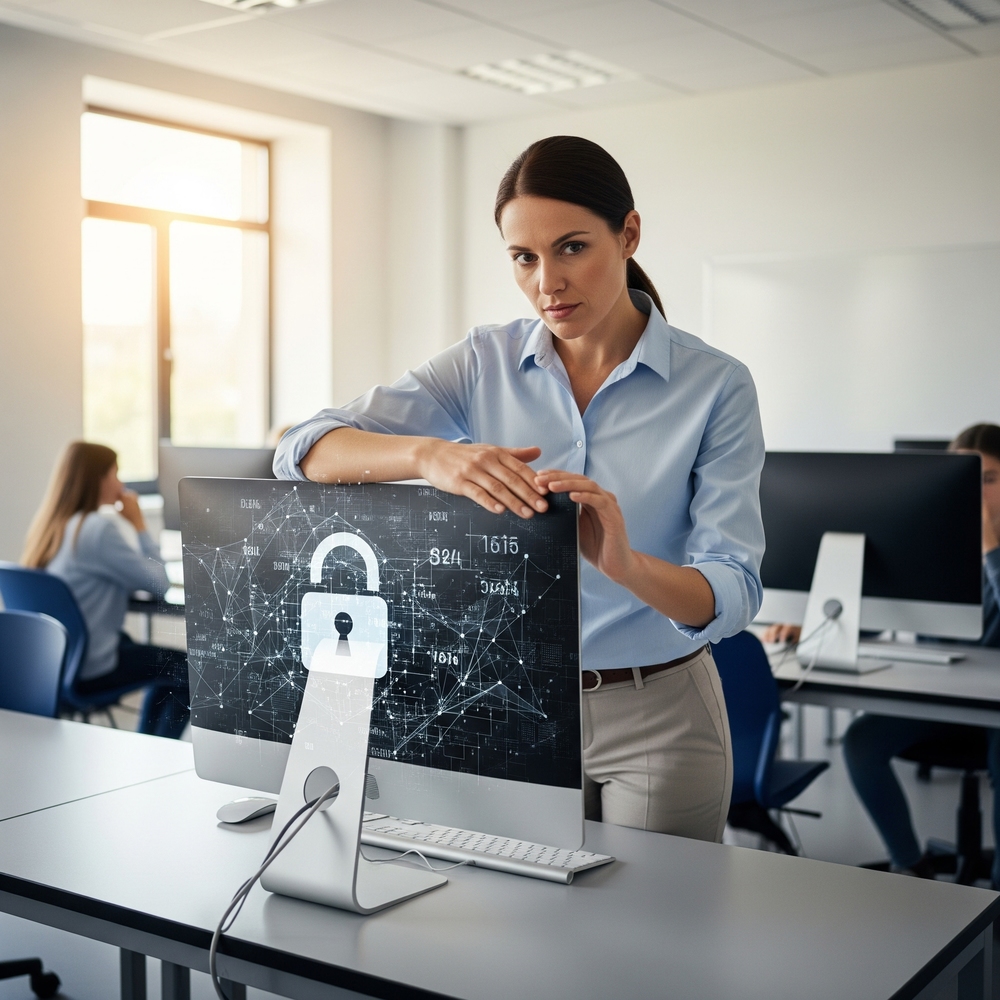With the start of a new school year, it's crucial for teachers and staff to get back into the rhythm of strong cybersecurity practices. Cybercriminals often target educational institutions, especially during periods when staff are on break, knowing systems may be less monitored. Here’s a quick guide to help you protect yourself and your school community from threats like phishing and malware.
1. Be Wary of Phishing Scams 🎣
Phishing is one of the most common ways attackers gain access to sensitive information. They'll send emails that look legitimate, often from a known source like your school's IT department or a district administrator, to trick you into clicking a malicious link or giving up your login credentials.
Check the Sender: Always look closely at the sender's email address. Scammers often use addresses that are slightly different from the real ones. For example, it-support@myschool.com might become it-support@myschool.co.
Don't Click Suspicious Links: Hover your mouse over a link to see the actual URL before you click it. If it looks strange or doesn't match the expected website, don't click it.
Look for Errors: Phishing emails often contain typos, poor grammar, or unusual formatting. These are big red flags.
Don't Rush: Be suspicious of any email that creates a sense of urgency, threatening to close your account or demanding immediate action. Legitimate organizations rarely use this tactic.
2. Secure Your Passwords and Devices 🔒
Your passwords and devices are the first line of defense against cyberattacks. Take a few minutes to make sure they're secure.
Use Strong, Unique Passwords: A strong password is at least 12 characters long and uses a mix of uppercase letters, lowercase letters, numbers, and symbols. Never reuse passwords across different accounts. If one is compromised, all of your accounts are at risk. Consider using a password manager to help you keep track of them.
Enable Multi-Factor Authentication (MFA): MFA, sometimes called two-factor authentication (2FA), adds an extra layer of security. Even if a hacker gets your password, they can't access your account without a second verification step, like a code sent to your phone.
Update Your Software: Regularly update the operating systems and applications on your work and personal devices. These updates often include critical security patches that fix vulnerabilities attackers could exploit.
Lock Your Devices: Always lock your computer, tablet, and phone when you step away, even for a moment. Enable automatic locking to protect your information from prying eyes.
3. Protect Your Data and Network 🛡️
What you do online can impact the security of your entire school network.
Be Careful with Wi-Fi: Avoid accessing sensitive work information when using unsecured public Wi-Fi networks. Attackers can easily eavesdrop on these connections.
Back Up Your Files: Regularly back up important data to an external hard drive or a secure cloud service. This can save you from losing your work if a device is lost, stolen, or infected with ransomware.
Separate Work and Personal Use: Where possible, avoid using personal accounts or devices for school-related tasks and vice versa. This helps create boundaries and reduces the risk of a breach on one side affecting the other.

